You can’t go far in Southeast Asia without encountering a durian.
Measuring up to 1 foot in length, the “King of the Fruits” has an unmistakable shape – a spiky, barbed ball filled with a starchy, custard-like pods – and an infamously pungent aroma.
While some Westerners struggle to stomach the exotic fruit, American Lindsay Gasik is completely obsessed.
Based in Penang, Malaysia, Gasik spends her days hunting for the best durians in Asia and creating detailed resources for travelers.
On her blog “Year of the Durian,” she documents the fruit’s complexity and nuanced flavors, relays engaging stories about durian farmers and tracks down lesser-known varieties.
She also organizes durian tours and has penned two guide books, including recently published “The Durian Tourist’s Guide to Penang.”
“(While traveling), I started noticing that there was this kind of obsession on durian, a fixation on durian, more than any other fruit … People would travel from all over the world just to eat this one kind of fruit,” 29-year-old Gasik tells CNN Travel.
“I was curious to find out what this whole durian thing was about.”
A ‘magical fruit’
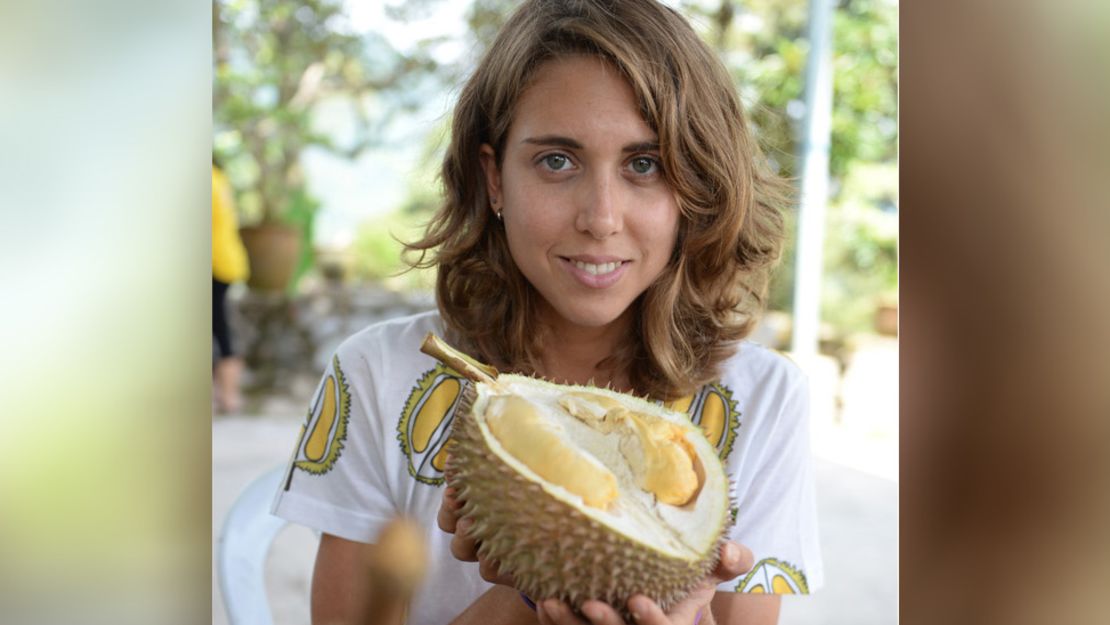
Hailing from a town of 14,000 people in Oregon, Gasik was inspired to taste durian in 2009 after a raw food festival-slash-wedding for raw food gurus Matt Monarch and Angela Stokes.
At the event, Gasik recalls hearing guests talk about a “magical” fruit – durians – that would “open her chakras” and “change her life.”
She finally tracked down some freeze-dried durian, but it didn’t sate her curiosity.
A few days later, Gasik spent about $13 on a durian at an Asian grocery store in Eugene, Oregon, as a 20th birthday gift to herself.
She took it to the park, hacked it open with a bread knife – there were no YouTube tutorials back then – and dug in.
“I thought it was delicious … I never thought it smelled bad or had that reaction,” says Gasik. “It tasted like a French vanilla ice cream to me.”
As for opening her chakras?
“I did not feel high afterward,” she says. “But it did change my life. I mean, look at me now.”
12 months of durians
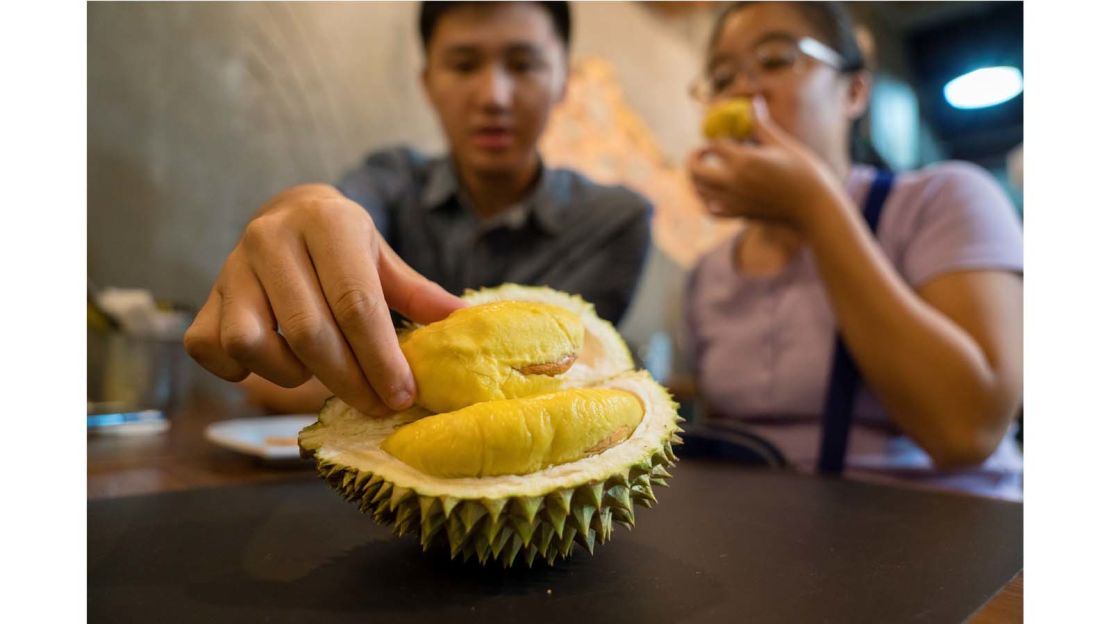
Gasik’s next adventure with durians began after graduating from college.
She studied journalism and Spanish at the University of Oregon but graduated during the recession and couldn’t find a job.
Encouraged by her dad, Gasik took some time off to travel. For the next couple of years, she and her now ex-husband spent stints in the Philippines, Costa Rica, the United States and Southeast Asia.
While traveling, Gasik learned about the elusive “durian trail.”
“The durian trail is this idea that if you change countries, you can stay in durian season all year because of the monsoon patterns,” says Gasik. “So it’s possible to stay in durian season 365 days of the year.”
Since the trail wasn’t well documented at the time, Gasik set out to establish the route and chronicle the trip on her blog.
The idea? Travel to 12 countries in 12 months, tasting durians everywhere they went.
“It was really, really hard to figure out where to go. It became like this hunt. Where is the season going to happen next?” says Gasik.
“We knew it was happening somewhere, but there weren’t a lot of resources on the Internet at the time. There weren’t these (groups) on Facebook or WhatsApp … I didn’t even have a smartphone when we started.”
That first year didn’t have a clear itinerary, but the pair made it to nine countries: Indonesia, the Philippines, Thailand, Cambodia, Vietnam, Sri Lanka, Brunei, Malaysia and Singapore.
A delicious resource
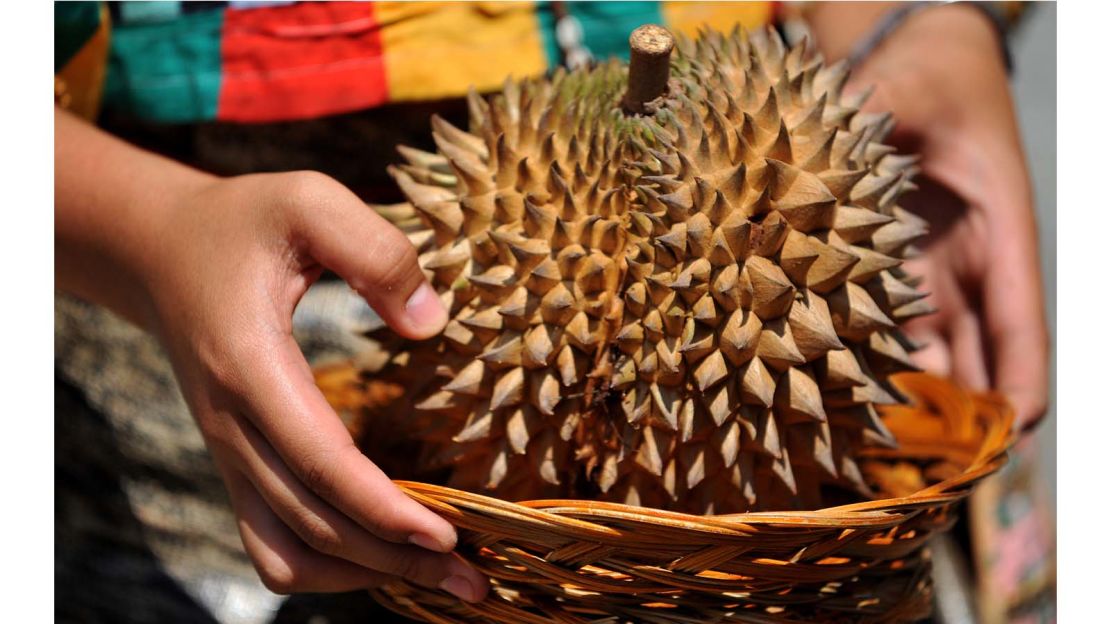
Just as they were heading back to the United States to get “normal” jobs, their blog started seeing more traction, with about 10,000 visitors a month.
“I had just brushed the surface of the durian world,” adds Gasik. “I had taken on the obsession and there were so many questions in my mind that weren’t answered.”
Instead of staying in the United States, Gasik made her way back to Southeast Asia in 2013 and has been exploring since.
“The places where durians grow are not the places where most tourists are going to visit, so there is very little information for Western people … which farms to go to, when to go, how to avoid bad durians …” says Gasik.
“It became clear that there was a niche that wasn’t being filled on the Internet … I felt like I was providing a service to people.”
Gasik not only shares stories about farmers and vendors, but she also documents durian varieties in delicious detail.
“Perhaps the most beautiful durian in Penang, Kun Poh, originated in the Sungai Pinang region and still tastes bests from there,” she writes on her blog.
“It’s a super-soft and messy durian with a fragile skin that tears easily, spewing its creamy interior, but the messiness is made up for by the gorgeous orange color, rippling wrinkles and complex milk-coffee flavor.”
One of a kind
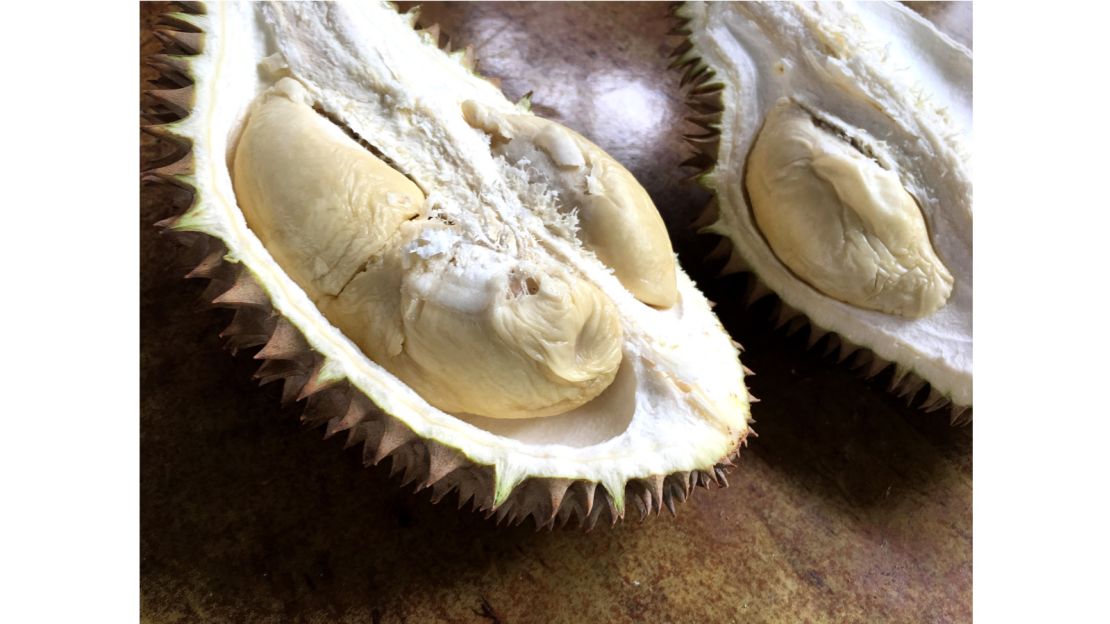
There are thousands of durian varieties in the world, growing in tropical latitudes from Hawaii to Borneo, Costa Rica, Brunei and more.
Of the 130-some registered varieties in Malaysia, Gasik would guess that she’s tried at least 65 over the past 10 years. In Thailand, she’s sampled about 65 of 234.
You can identify durians by their color, texture, aroma, stem length, spike shape – some are tiny, others pyramidal, some thick and knobby – and flavor.
“There are durians that (taste) like coffee, milk chocolate, white chocolate, coconut cream, whisky, wine… ”
Some even taste like banana rum.
“Just because you tried one kind of durian doesn’t mean you don’t like durians,” she says.
“You just don’t like that one kind.”
When it comes to durian tours, Gasik carefully organizes itineraries and works with local guides who lead travelers through Malaysia, Indonesia, the Philippines or Thailand to visit the best farms at the right time, depending on the harvesting season.
“I am really trying to help introduce people both to different kinds of durian varieties and also other farms, and other regions,” she adds.
Just like an eclair
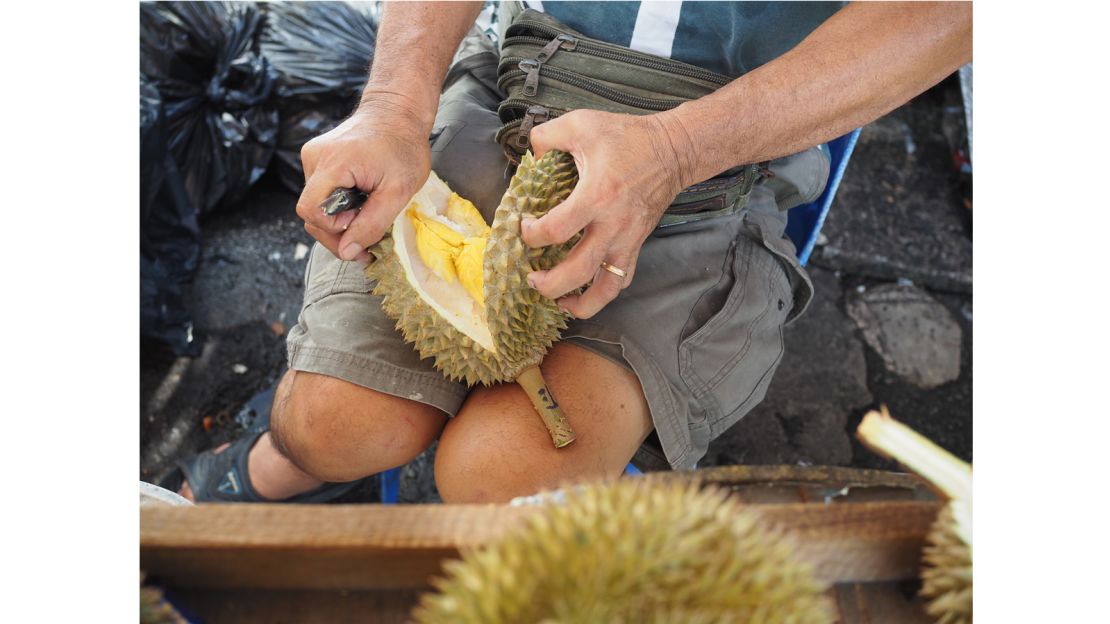
Durians are wildly diverse, not just in terms of variety, but also in terms of local cultures.
“Traveling to all these places, I noticed there is a culture around eating durian that’s more like a wine – more of connoisseurship,” she says.
“One of the biggest discoveries that I made is that (in) Malaysia, Thailand and Indonesia, the way they harvest their durian is different and the taste that they expect is different.”
In Thailand, people prefer to eat durian a little bit early to give them a longer shelf life. As a result, they tend to be starchy, sweet and have a milder aroma.
“Durians ripen from the inside, around the seed outward, so the perfect Thai durian is a bit like an eclair – it has a skin that’s very firm, but the inside is like butter.”
In Malaysia, meanwhile, people prefer to let the durian ripen fully on the tree and drop naturally to the ground.
At that point, the pH has dropped, the fat content has increased, and the aromatic volatiles inside will smell more strongly of sulfur as they ripen, she adds.
That will result in a creamier, fattier durian.
As for the aroma? Some people associate durians with their smell, which has been described as “rotting meat” or “dirty socks” – or even “dead babies mixed with strawberries and Camembert,” to quote Julia Child.
But that’s not fair to durians.
“The typical stinky egg and onion sulfur smell comes out in later stages of ripeness and, often, the smell wafting up and down streets is really the rotting shells,” she says.
“Really, fresh durian smells mild and gassy like fresh grass.”
A life-changing fruit
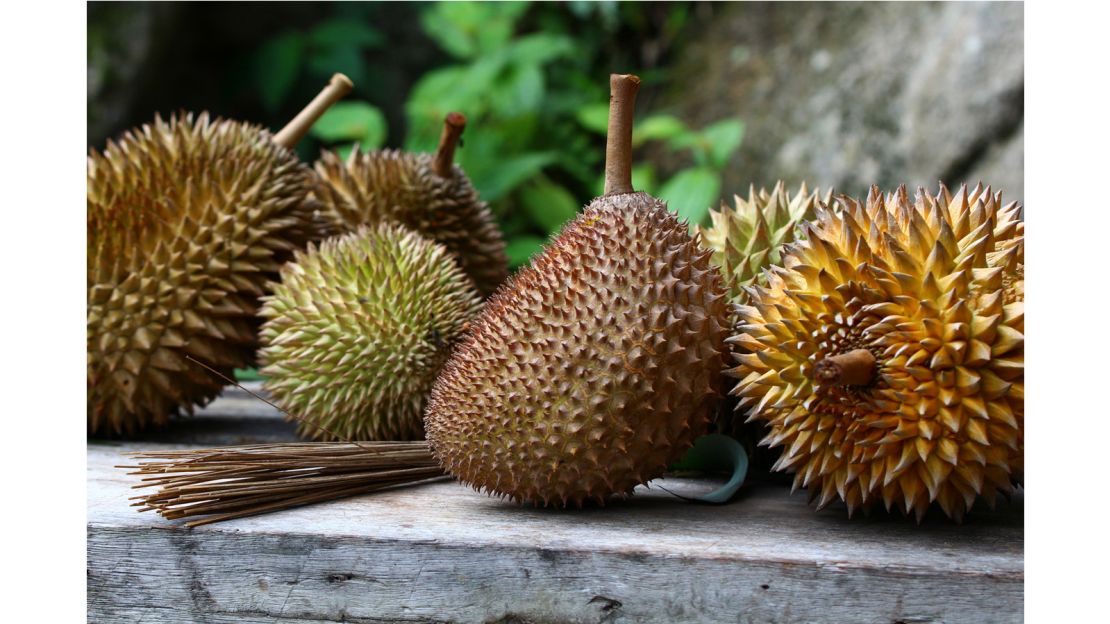
For Gasik, durians really have changed her life. The fruit has opened up a new world, a career and a calling.
“If you’re looking for experiences, a really great way to do it is to hunt durian,” says Gasik.
Not only can durian lead you on new adventures and less-trodden places, but it’s also a way to meet new people.
“It’s sort of a dive into their culture that people really appreciate,” says Gasik. “You end up having really great conversations with people.”














